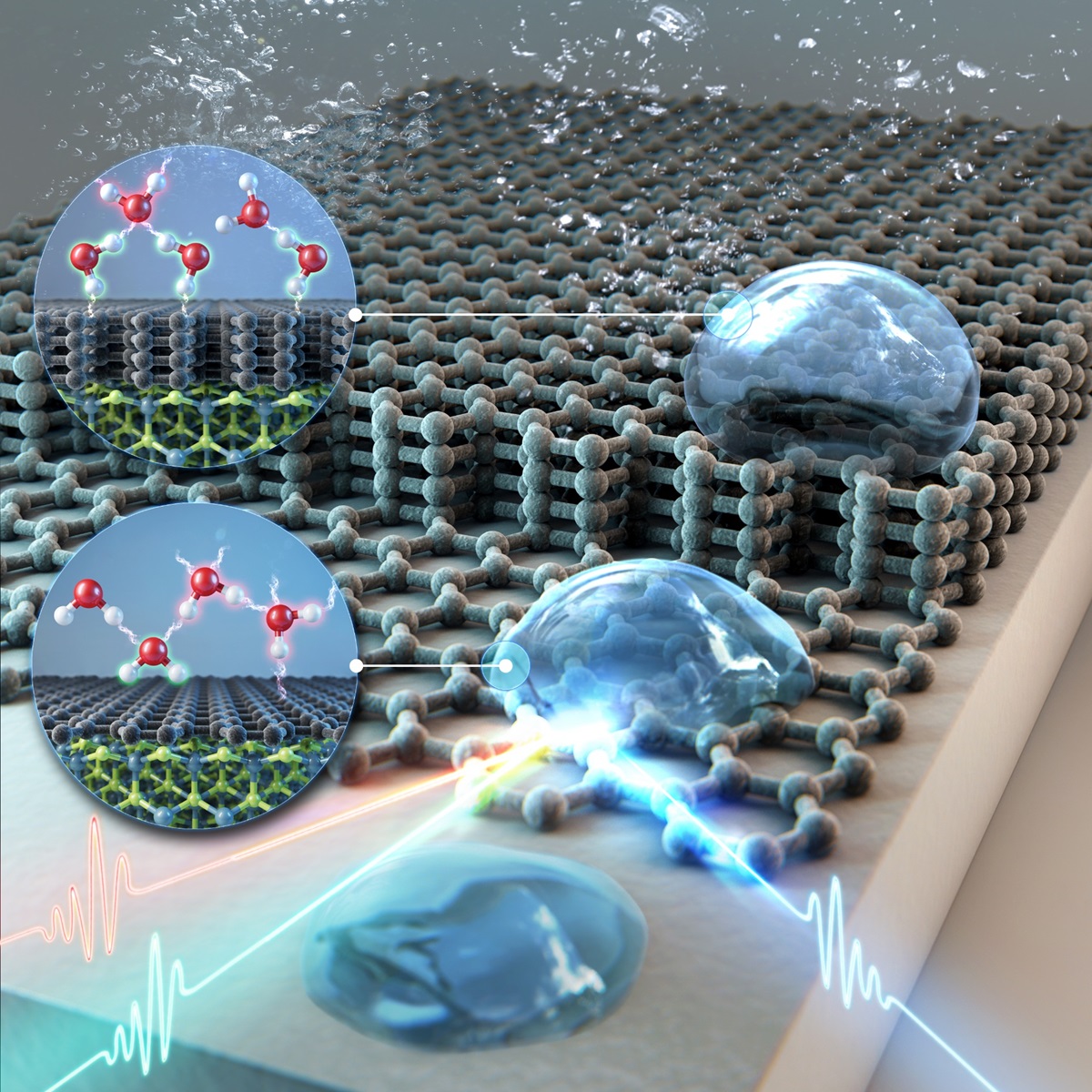mainmenu
Measuring the ‘wettability’ of graphene and other 2D materials
Measuring the ‘wettability’ of graphene and other 2D materials
April 27, 2022 - by Ayaz Khalol - Leave a Comment

Wettability of a cloth is the power of a liquid to take care of contact with a stable floor, and it’s proportional to hydrophilicity and inversely proportional to hydrophobicity. It is likely one of the most necessary properties of a stable, and understanding the wettability of various substrates is crucial for numerous industrial makes use of, similar to desalination, coating brokers, and water electrolytes.
To this point, research on the wettability of substrates have primarily been measured on the macroscopic degree. The macroscopic measurement of wettability is usually decided by measuring the water contact angle (WCA), which is the angle a water droplet makes with respect to the floor of the substrate. Nonetheless, it’s at the moment very troublesome to precisely measure what occurs on the interface between a substrate and water on the molecular degree.
At the moment used microscopic measurement strategies, similar to reflection-based infrared spectroscopy or Raman spectroscopy, are incapable of selectively observing the interfacial water molecules. For the reason that variety of water molecules in your complete bulk of the liquid is way bigger than the molecules which might be making contact with the floor, the sign of interfacial water molecules is obscured by the sign of water molecules within the bulk liquid.
To beat this limitation, a analysis group on the Middle for Molecular Spectroscopy and Dynamics (CMSD) inside the Institute for Fundamental Science (IBS) in Seoul, South Korea, and the Korea College revealed that vibrational sum-frequency era spectroscopy (VSFG) could possibly be used for measuring the wettability of 2D-materials. The group succeeded in measuring the vibrational mode of water molecules in interfaces between graphene and water utilizing VSFG spectroscopy.
VSFG is a helpful method that may join the macroscopic measurement outcomes with molecular-level properties. It’s a surface-selective device for investigating interfacial molecules utilizing its personal floor choice rule, and it has an excellent floor decision with a couple of molecular layers.

Water contact angle measurements of
graphene give details about macroscopic wettability. Alternatively, the VSFG
experiment can present details about the microscopic construction of
interfacial water and the wettability of graphene. Credit score: Institute for
Fundamental Science
The group recognized the distinctive potential of the graphene to mission the wettability of the substrate onto its floor, which known as “wetting transparency.” They noticed that the wetting transparency of graphene diminish because the variety of graphene layers elevated, disappearing when the graphene is greater than 4 layers thick. That is the primary remark to explain that graphene floor turns into hydrophobic above a sure variety of layers on the molecular degree.
Additionally, the researchers outlined the brand new idea of VSFG wettability, which is the ratio of water molecules forming robust hydrogen bonds in opposition to water molecules with weak or no hydrogen bond formation. The VSFG wettability correlated strongly with the adhesion power, which is calculated from the noticed macroscopic WCA measurements. This proved that VSFG is an efficient device for outlining the wettability of a cloth’s floor.
Utilizing VSFG wettability, the researchers measured the wettability of the graphene in real-time, as an electrical discipline was utilized for it to kind graphene oxide. It’s inconceivable to watch wettability in real-time with the standard WCA experiments. Subsequently, this means that VSFG could possibly be a decisive method for measuring the water adhesion power on any spatially confined interface the place the water contact angle measurement can’t be utilized. Along with graphene, VSFG spectroscopy is anticipated to make clear the wettability of different low-dimensional supplies.
First writer Eunchan Kim notes: “This examine confirmed that VSFG spectroscopy could possibly be used as a flexible device for measuring the wettability,” and “We exhibit the potential to measure the wettability of beforehand unobservable advanced techniques via VSFG spectroscopy.”
Professor CHO Minhaeng, the Director of CMSD notes: “With VSFG spectroscopy, we’re learning the microscopic properties of graphene in addition to different two-dimensional purposeful supplies similar to graphene oxide and hexagonal boron nitride,” and “By this, it is going to be doable to resolve numerous issues that hinder the commercialization of two-dimensional purposeful supplies.”
This analysis was revealed within the on-line version of Chem on April twenty sixth.
Identification of the wettability of graphene layers on the molecular degree
Extra info:
Eunchan Kim et al, Wettability of graphene, water contact angle, and
interfacial water construction, Chem (2022). DOI:
10.1016/j.chempr.2022.04.002
Journal info:
Chem
https://ilmiwap.com/measuring-the-wettability-of-graphene-and-other-2d-materials/


